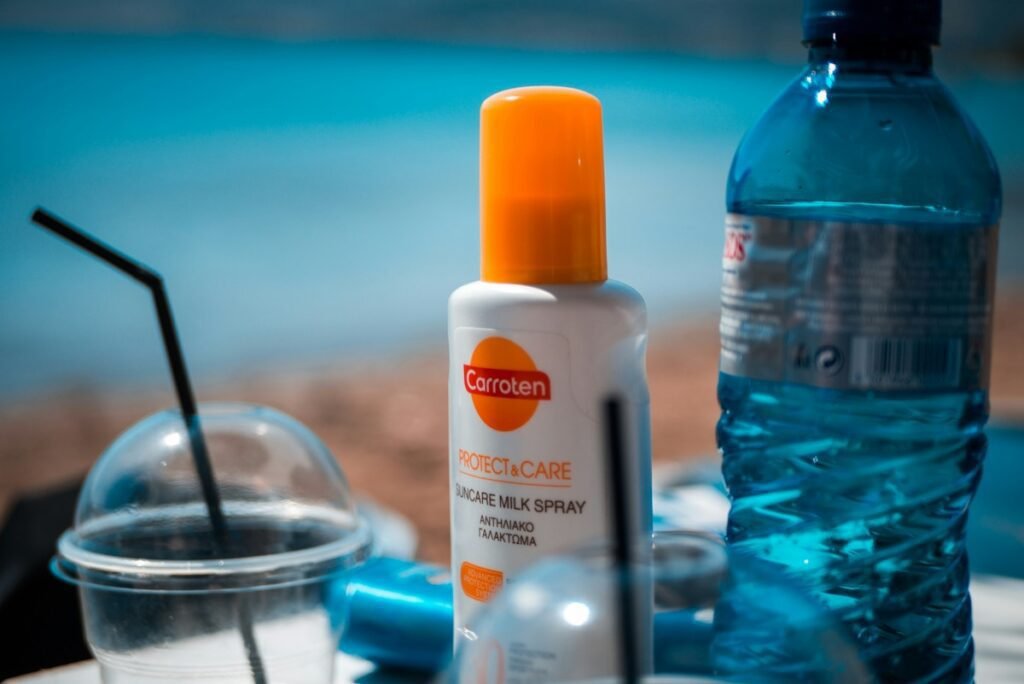Understanding the Environmental Impact of Sunscreen: What You Need to Know
In an era where climate change daily reshapes our experiences, heading to the beach is no longer as straightforward as it once was. As summer heat waves intensify and the ozone layer struggles to recover, robust sun protection has become essential. However, the ingredients in most sunscreens can pose significant risks—not only to our health but also to marine ecosystems.
The Dual Nature of Sunscreens
Sunscreens are generally formulated with UV filters that protect against sunburn and skin cancer. These filters fall into two categories:
- Organic (Chemical) Filters: Absorb UV radiation.
- Inorganic (Physical) Filters: Use substances like zinc oxide and titanium dioxide to reflect UV rays.
While sunscreen is vital for personal protection, an estimated 6,000 to 14,000 metric tons of UV-filtering chemicals leach into coastal areas every year, risking the health of coral reefs and other marine life.
The Hidden Dangers to Marine Ecosystems
Research highlights the adverse effects of sunscreen chemicals on various marine organisms. A 2025 study from the Plymouth Marine Laboratory showcased significant issues ranging from enzymatic impairment to reproductive issues. Craig Downs, executive director of Haereticus Environmental Laboratory, illustrates the multifaceted toxicities of conventional sunscreens:
“There are multiple axes of toxicities associated with the petrochemical sunscreens, ranging from reproductive development toxicities to neurotoxicity.”
Call for Action: Experts like Anneliese Hodge stress the need for prompt investigations into alternative sunscreen ingredients that pose less risk to marine ecosystems.
The Scope of Pollution
Sunscreen is just one among many synthetic pollutants contaminating our waters. The degradation rate of UV filters fails to keep pace with their release, primarily through runoff and wastewater that treatment facilities cannot fully address. This pollution is not confined to coastal waters; it extends into freshwater lakes and streams.
Key Concerns:
- Coral bleaching
- Impaired zooplankton hatching
- Affected sea urchins and fish
Even distant locales like Antarctica show signs of this pervasive pollution, raising alarms about the interconnectedness of global ecosystems.
The Complexity of Co-Pollution
The interaction between various chemical pollutants complicates the issue further. With numerous contaminants coexisting in marine environments, the cumulative impact remains largely uncharted territory.
Recent findings show that some sunscreen components can accumulate on plastics, potentially prolonging their degradation period. As Sabine Matallana-Surget describes:
“It’s as if [EHMC] acts like a ‘biofilm stabiliser,’ shielding the plastic from natural degradation processes.”
Evaluating Sunscreen Choices
Navigating through sunscreen options has become increasingly intricate. Terms like “reef-safe” may lead to assumptions of environmental safety, yet many products lack adequate testing and regulatory oversight.
Criteria for Evidence-Based Choices:
- Claims of “reef-safe” or “coral-safe” need validation through toxicity testing.
- Inorganic mineral sunscreens are not always a safer alternative; some can also negatively impact marine life.
Experts underscore the need for full disclosure of ingredients on product labels to empower informed consumer choices.
Health Implications for Humans
While environmental toxicity is front and center, studies indicate that some sunscreen components might have health implications for humans as well. A potential health concern is the endocrine disruption linked with certain sunscreen chemicals.
Key ingredients such as oxybenzone and octinoxate have drawn scrutiny. Researchers are motivated to understand whether prolonged exposure can lead to health issues, particularly among vulnerable populations like pregnant women.
The Path Ahead: Innovations and Regulations
To foster a balance between skin protection and environmental health, experts recommend a meticulous reevaluation of sunscreen formulations. Strategies could include:
- Green Chemistry Principles: Selecting natural ingredients that break down without leaving harmful residues.
- Regulatory Reforms: Implementing stricter testing and labeling standards.
Alternative Sun Protection Measures
For those concerned about the environmental impact of conventional sunscreens, there are several non-chemical sun protection methods, including:
- Wearing protective clothing
- Using wide-brimmed hats
- Seeking shade in peak sun hours
While sunscreen serves as a vital tool against sunburn, education on responsible use is key.
Conclusion: The Need for Informed Decision-Making
As we brace ourselves for changing climates and the associated environmental challenges, the conversation around sunscreen must include both personal health and ecological responsibility. By scrutinizing product ingredients and embracing holistic sun protection strategies, we can foster a more sustainable future for both ourselves and our planet.
For further insights, you may explore sources such as UN Environment Programme and National Oceanic and Atmospheric Administration to delve deeper into marine environmental health.


